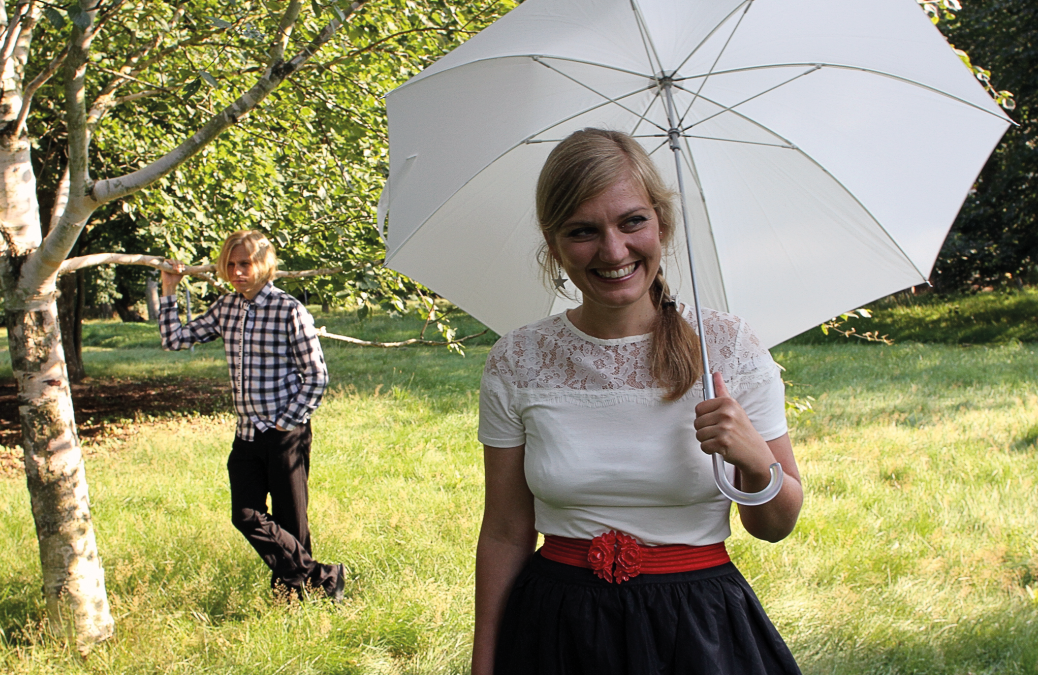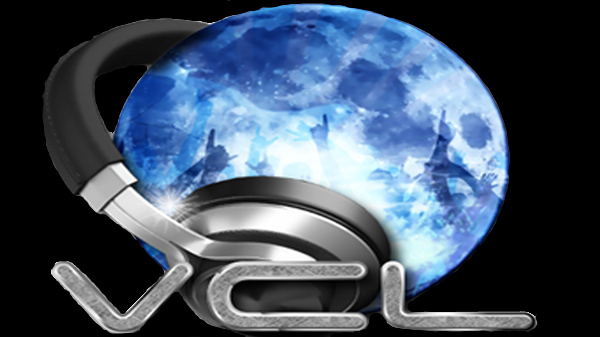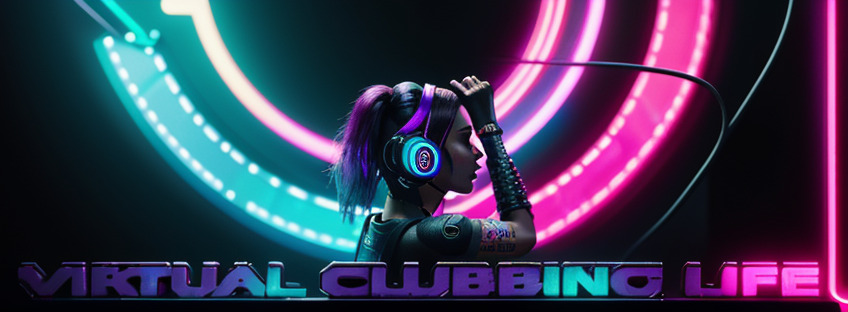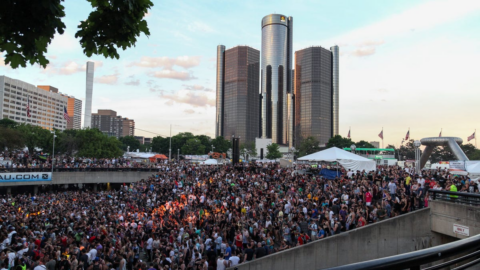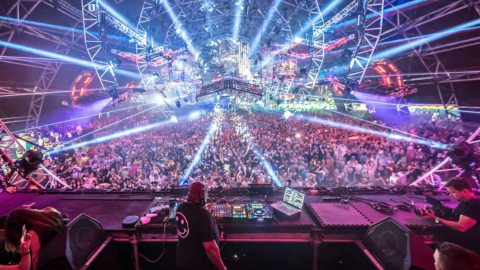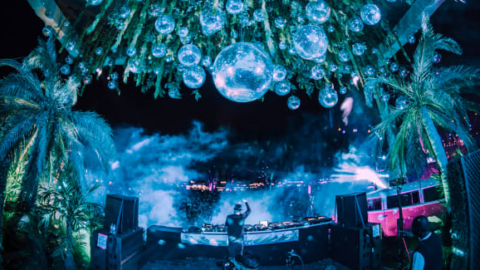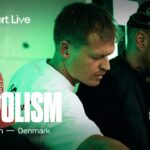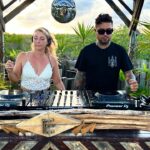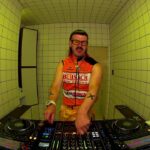MusicRadar is supported by its audience. When you purchase through links on our site, we may earn an affiliate commission. Here’s why you can trust us.
After disbanding in 2016, Swedish italo-disco/synthpop duo Sally Shapiro returns with a fourth album. Danny Turner discusses synths, pseudonyms and the making of Sad Cities
Inluenced by Swedish pop and Italo disco artists such as Valerie Dore, Lili & Susie and Katy Gray, work colleagues Sally Shapiro and Johan Agebjörn joined forces to release their heralded debut album Disco Romance in 2006.
Further albums, My Guilty Pleasure (2009) and Somewhere Else (2013), sustained interest in their elegant, melancholy synthpop sound despite Shapiro’s low-key public persona and choice to eschew playing live.
By 2016, Shapiro and Agebjörn’s musical tastes had begun to drift and the project was seemingly over. However, the last five years has seen them working in seclusion with various co-writers including Electric Youth, Highway Superstar and Tommy ’86.
Despite Shapiro’s preference for keeping the music industry at arm’s length, the duo’s sumptuous melodies and expertly crafted songwriting ensures that Sad Cities is an early contender for synthpop album of 2022.
Sally, people often tell us that you’re very shy, so what made you want to take part in the extrovert pop industry?
Sally Shapiro: “When I recorded the first song that I made with Johan I didn’t realise that he’d send it out to a lot of different online forums. Had he asked me if I wanted to be a pop star I would have probably said no, I don’t want to do that [laughs]. We just made the record for fun, but it got a nice reception and people liked it, and since I don’t feel the need to perform live and we’ve never done any TV shows, it feels OK for me to just make recordings.”
Sally Shapiro is not your real name. Does it feel more comfortable using a pseudonym as a mode of expression?
SS: “I didn’t feel comfortable using my real name and found that it’s much better using a pseudonym, which makes me feel more confident at doing what I do. When I sing as Sally Shapiro it’s a mixture of writing lyrics about things that are very personal to me and the identity that I created. Sometimes it’s easier to say things out loud when you’re not using your real name, and maybe that’s why there are so many anonymous artists around today.”
Appearing as a hologram sounds quite appealing to me
Johan Agebjörn: “If you want your music to have artistic value, it has to be grounded in some part of yourself, so we always feel that the themes that we explore as Sally Shapiro are saying something about that self-expression.”
Coming from Sweden, would it be too obvious to say that you were inspired by Abba?
SS: “When I was young I was mostly listening to artists like Lili & Susie – a 1980s pop band that sounded a little bit disco; like Bananarama, but Swedish. The return of Abba came as a surprise to us, but I think they’ve pulled it all together very nicely. Because I am not performing live, I like what they have done with their avatars – appearing as a hologram sounds quite appealing to me.”
Johan, you also prefer to be in the background. What sparked your interest in synthesis?
JA: “I was a fan of the Pet Shop Boys and identified more with Chris Lowe – the guy with the baseball cap in the background playing the keyboards. When I was young, there were a lot of music shops in my city and I used to stop by and test different synths.
“I wanted one that sounded similar to the music that I wanted to make and thought the Yamaha PSR-3500 was a pretty good option, so I sold my Commodore 64 computer and saved all my Christmas and birthday money to buy it. I still use it sometimes because some of the percussion and bass sounds still sound very cool – it’s been a lifetime companion.”
You’re both big fans of Italo disco. How do you think that genre is differentiated from everyday disco music?
JA: “A lot of Italo disco is quite upbeat and happy, but both Sally and I like artists like Valerie Dore, Miko Mission and Savage who had a more melancholy style with very beautiful pad sounds and sad lyrics. That really grabbed our attention and we also feel that, today, there aren’t many people making this style of Italo disco so maybe we need more of this kind of music.”
Up until 2016 you’d released three albums but decided not to move forward with the Sally Shapiro project. What brought you back into the studio?
JA: “In 2016 we felt that we were going in different musical directions. I was moving towards ambient, trance and experimental instrumental music and Sally was more interested in making guitar-based pop. We didn’t feel inspired and thought Sally Shapiro had probably had its time as a musical project, but after a while our feelings changed. We found some new inspiration and rediscovered the joy of making electronic pop/disco music – and then we started to question why we ever ended the project.
It was only after we listened to the new album that we realised that something about our sound had changed
“We worked for quite a long time on new music without announcing anything, which was good because we didn’t feel under any pressure and didn’t have people asking us all the time when the next release would be out. We just worked on new material and at some point in the journey contacted the Italians Do It Better label to release new music.”
Had you noticed that the music industry had changed a lot during the time you spent away, and was that a concern?
SS: “I haven’t noticed that but I’m probably not the right person to ask because I don’t have a lot of insight when it comes to the music industry.”
JA: “I’ve always liked having a physical product to accompany the music, so the digital shift is something I feel a bit sad about. I released a solo album earlier this year and discovered that I couldn’t give the CD to that many people because most of them don’t have CD players anymore.
“I’ve also noticed that most of the power has transferred to those who decide what goes on a Spotify playlist and blogs are less important these days. Our career was given a big push because of all the MP3 blogs back in 2006/07, but now things are very different. Thankfully, our record label understands more about all of that than we do.”
So with this fourth album, Sad Cities, did you feel there was something left unsaid or that you might approach your sound from a different angle?
JA: “It was only after we listened to the new album that we realised that something about our sound had changed. It does sound a bit different in terms of the production, for example, there are a lot more mid-tempo tracks. We didn’t want to do the same thing again, so it was important for us to make the album more varied but I‘m not sure whether that decision was a conscious one.”
Sally, is the writing process as simplistic as waiting for Johan to provide a demo for you to work on?
SS: “The starting point for me comes from Johan, who might create a demo for me that doesn’t have any lyrics but just comprises some basic chords or melodies. It’s rarely a completed track, so I’ll usually just listen to that, tell him if I like it or not and for those tracks that don’t already have a co-writer we’ll discuss what the lyrics might be about.”
There’s too much focus on production and too little focus on songwriting within electronic music these days
JA: “Sally still doesn’t allow me into the room when she performs vocals, so it’s always a very exciting moment for me when I get to hear what she’s recorded. We usually spend a couple of days recording each track. On the first day, Sally will lay down the vocal and I’ll listen to it and offer some comments before Sally records the vocal one more time.”
Has what you sing about changed over the years, particularly in the light of the current pandemic?
SS: “Despite the pandemic I don’t think the mood of our music has changed much. Of course, it affects you personally to know that people have been dying, but I am quite lucky not to have been affected by that, and it’s not affected our career as artists because we don’t go on tour.”
JA: “Since we’re friends and we live in the same city we have always met and played music together, so things are not much different now to how they used to be. The album title actually has a bit of a double-meaning. On the one hand we have the track called Sad City, which is about people being tired of living in a particular city, but it’s also saying something about the pandemic because, before, all of these cities were pulsing with life and that’s changed now. We are quite introverted, but some artists are forced into being extroverts and I would imagine that the pandemic has affected those types of artist more.”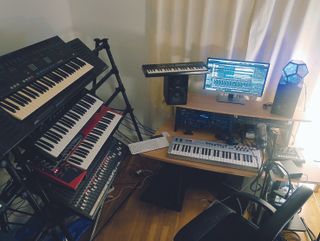
JA: “It’s usually different from one track to the next. Sometimes I have a chord sequence that really inspires me, other times it might be a sound or a short melody. I also work with a lot of collaborators and co-writers, so the starting process can be quite a dynamic one. I use both hardware and software synths, but once everything is recording in the computer I tend to produce the tracks in a lot of different environments.
“I might work on them on the train on the way to work or sometimes I’ll mix or edit stuff when my kids are falling asleep next to me. Since I have three kids it’s difficult to find the time these days, so my approach is often quite pragmatic, but I’m always thinking about music so when I sit down to produce I already know what I want to do.”
What does your gear setup look like, Sally?
SS: “No, I have nothing like that at all, except for a piano and the Casio MT-52 synthesiser, which I got from my dad when I was 10. I still have it because I think it’s nice and sweet and fun, but I’m not the production type.
JA: “I use Sally’s keyboard sometimes because it has some really sweet electric piano sounds. I actually released an album in 2015 called Notes that used her MT-52 keyboard on almost every track.”
We noticed you have the TAL-U-No-LX Roland Juno-60 emulator. Would you say that you’re more into software emulations than hardware?
JA: “It’s a very good little soft synth that’s easy to understand and program. It can do these very warm Italo disco or synthwave dance sounds and has two choruses that make it sound really atmospheric. It’s probably my favourite soft synth at the moment, so I used it on many of the album tracks. Although I haven’t compared it to the original, mostly I’m quite happy to use soft synth emulations. If I want to get them to sound a bit more analogue I’ll use various tape compression techniques to make it more organic.”
JA: “In the beginning I didn’t have much money so it was a cheap way to start. The first thing I bought after the PSR-3500 was a Roland DJ-70 sampling workstation. When I first used computers to make music, controlling something was always done using a sampler and I started sampling a lot of different synthesisers, instruments and drum sounds from vinyl. I still work a lot with samples and think the sampler is a fantastic instrument. 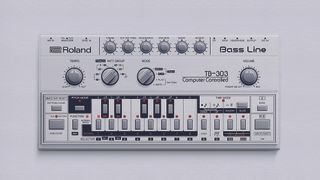
“Sometimes I’ll record something to tape and resample it just to get a bit of character or noise from the tape recorder and then maybe I’ll translate it one or two octaves down to create some cool effect. I also have waveforms from the Roland TB-303 that I like to put into the sampler and use the sampler’s filters to change the sound. For example, on the track Tell Me How, when you hear the 303 it’s a real 303 waveform filtered through a sampler.”
Are you deliberately avoiding flashy modern sounds in favour of melancholy, vintage sounds?
JA: “That’s probably a reflection on a lot of the music that I listen to. I’m less interested in whatever’s in the charts and the new music I listen to is often very retro. The track Million Ways is a good example of how I prefer to use vintage sounds in my productions because it was inspired by Italo house and a lot of the 909 snares and Korg pianos that they used to use back in the ’90s.”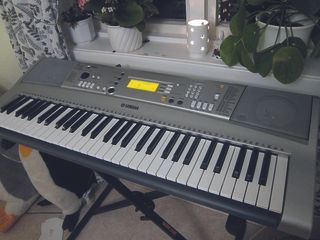
JA: “I’m glad you said that because I agree that there’s too much focus on production and too little focus on songwriting within electronic music these days. That’s why it’s really good to have Sally with me on this project because she’ll refuse to sing something if it’s not good pop music. She has a good ear for that and the co-writers I work with have an ear for good songs too. Personally, I do like to make abstract electronic music, but that always goes into my various solo projects.”
SS: “I also prefer to return to the classic pop sound and have less interest in listening to modern electronic pop music. I still listen to what I listened to 30 years ago. Over the last few months I’ve been listening a lot to The Smiths and some classical and piano-based music. I don’t really listen to much disco, and maybe that’s because we’ve made this album. Because I’ve been listening to disco a lot lately, in my spare time I prefer to listen to something completely different.”
Is Morrissey a lyrical influence?
SS: “I find that lyrics are always quite important to listen to and obviously they’re very important for Sally Shapiro. Even though my lyrics may sound very melancholy and naïve, they are from the heart and I hope they appeal to what people might feel but not always say out loud. Our co-writers often bring lyrics with them, but we’ll often modify those so the process is very different from track to track.”
JA: “We collaborated with Electric Youth for the track Starman on our third album and think that they’re really good pop writers so we asked them if they’d be interested in contributing or whether they had any track sketches they’d like to offer us.
“Austin (Garrick) got back to me with a loop, some chords and a few simple melodic elements and we built the track Love in Slow Motion from there. In 2014 we collaborated with Tommy ’86 on a track called Why Did I Say Goodbye, which became a bit of a viral synthwave hit and he’s also made some remixes for us that we really like. In his case, he sent some chord sequences that we built on.”
We feel it’s important to write and record the music in the same room together
How did you meet Alex Karlinsky from Highway Superstar?
JA: “He’d also done a few remixes for us and asked if we’d like to make a track together. He sent a verse that we built up and kept working on together until we had the finished track, Down This Road. We’re really happy with that one so it’s going to be released as a single in a couple of weeks.”
You seem to switch between using two DAWs, Reason 11 and Cubase Elements 7?
JA: “Reason is where I put the instrumental and use Cubase for recording, editing and mixing vocals. Reason’s not quite as handy at editing or handling vocal recordings as Cubase, but otherwise I’m a fan of it and think it has really good effects, reverbs and is quite easy to use. Now it’s also got VST support so I can use the TAL-U-No-LX Juno-60 emulator and the Full Bucket Mono/Fury plugin, which is a really good simulation of the Korg Mono/Poly analogue synth.”
What’s your collaborative process like?
SS: “We feel it’s important to write and record the music in the same room together. I always record vocals at Johan’s studio and he prepares everything and makes sure the music is all set in terms of the parts I should sing. Taking into consideration my other answers, you might be surprised to hear that I am quite involved in the mixing process. 
“I don’t know so much about all the different drums and instruments that Johan uses, but I can hear whether something sounds good or not. For example, if I feel there’s too much treble on the high end of the spectrum I’ll sit down with Johan and make some comments on that, but usually my comment will be that the vocal should be louder and the drums lower [laughs]. Sometimes I’ll ask for sounds to be taken away if there are too many competing with each other.”
JA: “I also have a summer cottage where we recorded a few songs, which is mostly due to logistics. I spend most of my summers there, so it’s quite convenient, but we find that playing in another environment also tends to affect our sound. Personally, I think that how the room looks or the space that you’re in affects the way that you approach the recording of music, so we did end up having had to re-record some of those songs because we felt they sounded different from each other.”
Does that primarily relate to vocals where there may be some external noise depending on the recording location?
JA: “Because we’re not doing live ballads it’s not super-important to record in a completely silent room – if there is some noise it will usually get masked by the other instruments, but sometimes noise bleeds through so we might use noise cancellation software on the vocals.”
What are you using when it comes to recording beats?
JA: “I use a lot of sampled drums sounds from a library that I’ve been collecting for 20 years, but I also collaborated with Johnny Jewel for a lot of the beats on this album. If he thinks a track should have a fat 909 snare, he’ll record that and send it over or sometimes he’ll play some of his Simmons SDS 8 pads.
“Otherwise, I’m mostly using Linn Drum samples, the usual Roland 606, 808 and 909 beats and a lot of Simmons snares and sampled sounds from different records. I also mixed the album with Johnny over Instagram, which involved metres and metres of detailed conversations.” 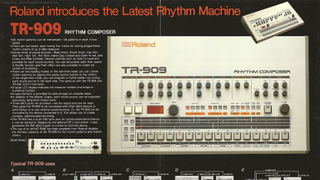
Would it not be easier to give Johnny a version of the track to work on?
JA: “I prefer to make the changes based on his remarks. 90% of the time I agree with him, but sometimes I don’t. Sally also agrees that everything sounds more cohesive after we mix the tracks that way.”
Having taken a break from making music together, have you noticed that Sad Cities has benefitted from the project’s reprisal?
SS: “I’m very happy about the album because we came to it with a new energy. Maybe it’s too early to say if it’s better because we’ve lived with the music a lot recently, but I think that the songs are more thorough. Maybe after a year or two I’ll have a different answer, but right now Sad Cities does sound different to our other albums.”
JA: “It’s probably good that there were a few years between the third and fourth albums because we encompassed a lot of influences during that time. We talked about the fact that it’s less reliant on sounds in the higher spectrum, which means the album is more based on vocals and drums and less on hi-hats and trebly sounds.
“So the sound is a bit different, which we feel is refreshing, but it’s always difficult to be objective about the songs themselves. When you work on an album you listen to it so much that in the end you’re quite tired of it. From that perspective, it’s always fun to listen back after a few years and hopefully think, wow, it’s actually quite good!”
Sally Shapiro’s new album Sad Cities is out February 18th on Italians Do It Better. (opens in new tab)
UVI Mission 6 review
PreSonus Studio One 6 review
IK Multimedia MODO Drum 1.5 review
Don’t miss the latest deals, news, reviews, features and tutorials
Thank you for signing up to Musicradar. You will receive a verification email shortly.
There was a problem. Please refresh the page and try again.
MusicRadar is part of Future plc, an international media group and leading digital publisher. Visit our corporate site (opens in new tab).
© Future Publishing Limited Quay House, The Ambury, Bath BA1 1UA. All rights reserved. England and Wales company registration number 2008885.
